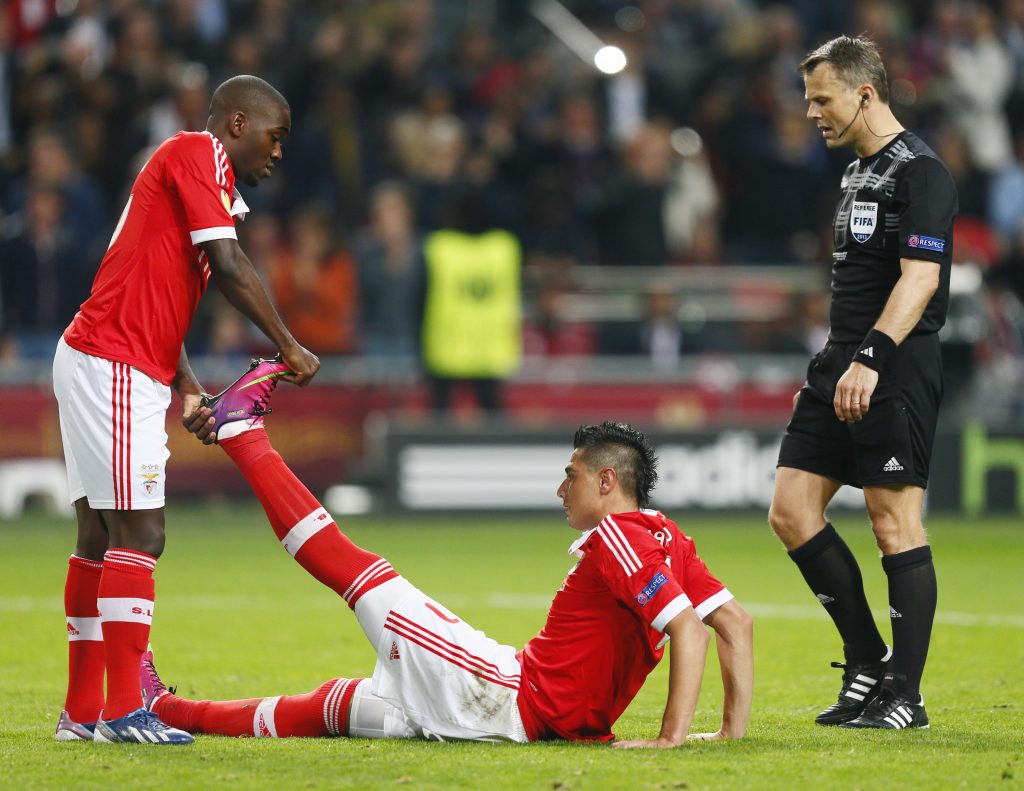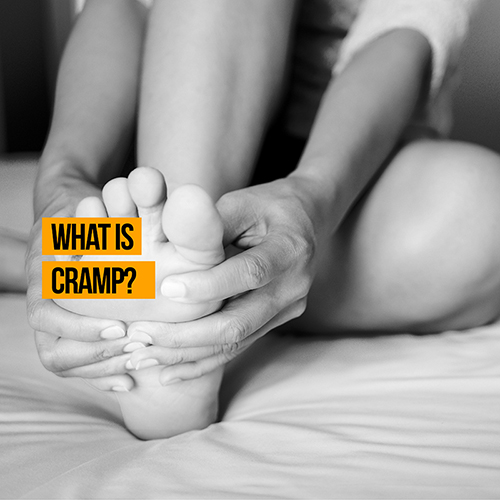Cramp, or ‘charley horse’ as you may have seen it referred to as in your favourite American tv show, is the sudden, involuntary contraction of muscles, which causes discomfort, pain and can temporarily cause a paralysis-like feeling in the affected area.
Skeletal Muscle Cramps – Skeletal muscle cramps are those associated with the muscle which we can control, those that, you guessed it, attach to our skeleton. They are most often suffered in the:
- Calf
- Thigh (both quad and hamstring)
- Arch of the foot area
- Hands
- Abdomen and rib cage area
More often than not, they’re associated with strenuous physical activity. Think footballers starting to drop to the floor towards the end of the game and their teammate rushing over to stretch out their leg.
Up to 40% of those affected by skeletal muscle cramps will experience considerable pain during the event. Usually once the cramp has gone, so will the pain be, but it could take up to a week for the lingering, significantly duller pain to go completely while performing physical activity.
Smooth Muscle Cramps – Smooth muscle cramps are those associated with the menstrual cycle and conditions such as endometriosis.
Nocturnal Cramps – These are skeletal cramps that happen while you’re sleeping. If you’ve ever woken up with cramp, you’ll know it. They typically occur in the same areas as normal, daytime skeletal cramps and are usually a result of the same things such as strenuous exercise and dehydration.
What Actually Happens when you Get Cramp?
The exact happenings during a cramp are not fully understood, but there are pointers that suggest that it’s related to muscle nerves serving the leg.
For non-disease related cramps such as during overexertion, the muscle is starved of oxygen, which can cause interference in the spinal neural reflex activity. When this happens, the spinal cord commands the muscle to keep contracting.
Experts suggest that the nerve ending is firing off at high rates, up to 150 electrical discharges every second. This would suggest that for these sorts of cramps there is no underlying problem with the muscle itself.
What can Cause Cramp?
The exact, definitive cause of muscle cramps remains somewhat of a mystery, but there are many different, not mutually exclusive theories.
Fatigue and Lack of Stretching – Muscles themselves are bundles of bunched up fibres that contract and expand to produce movement. If we stretch regularly, this lengthens the muscle fibres, so they can more effectively contract and tighten when you exercise.
Fatigue is another big cause of cramp, especially if the body is poorly conditioned, meaning it is quicker to reach that fatigue.
Dehydration – Dehydration, be it natural or accelerated by heat, can contribute to cramp. Sweating and not replacing the liquid lost drains your body of salt and natural minerals such as potassium, calcium and magnesium.
There are also a number of ‘risk factors’ that could make you more susceptible to cramping than the average joe while working out, they are:
- Age: Infants, young children and those over 65(due to natural muscle atrophy which means they can’t take as much load) are more likely to suffer from cramp.
- Overexertion: Essentially, going too hard during physical activity
- Medication: Certain medication is thought to contribute to cramp. Some of these are Statins (for high cholesterol), Raloxifene and Nifedipine.

How Can you Help Prevent Cramp?
It’s hard to nail down exactly how to prevent cramp, but by looking at the potential causes we are able to take a decent stab at it. Firstly, staying well hydrated is the first port of call, especially if regularly exercising.
Of course, regularly stretching, especially in the areas that are prone to cramping such as the calves, can help prevent cramp. This won’t ever completely eliminate cramp, but it can go a long way.
For a set of simple stretches to help prevent the onset of cramp, why not check out our simple stretching guide? Inside you’ll find a number of stretches you can perform no matter your fitness levels!
What To Do if you Suffer Cramp?
If you suddenly find yourself writhing back and forth holding your calf muscle and the pain persists for some time, you can put some pressure on the leg or foot by standing on it or walking around. If the cramp is specifically in the calf muscle, a good way or relieving pain quite quickly is to gently pull backwards on the big toe of the affected leg, thus stretching the muscle and providing relief.
Should you Ever Worry About Cramp?
Though most cramping is nothing to worry about, there are occasions where they can point toward something more serious.
You should consider seeing a doctor if you suffer severe cramps frequently that aren’t obviously related to strenuous exercise.
Severe, regular cramping without any obvious cause could indicate problems with nerves, circulation, metabolism, hormones, nutrition or medications.
Cramps can also form part of the effects of several conditions, ranging from the not so serious to the severe, these can include; Spinal nerve irritation or compression, Lou Gehrig’s disease, hardening of the arteries, narrowing of the spinal canal, chronic infections, thyroid disease and cirrhosis of the liver.
If you suspect your cramps may be out of the norm, consult your doctor!


